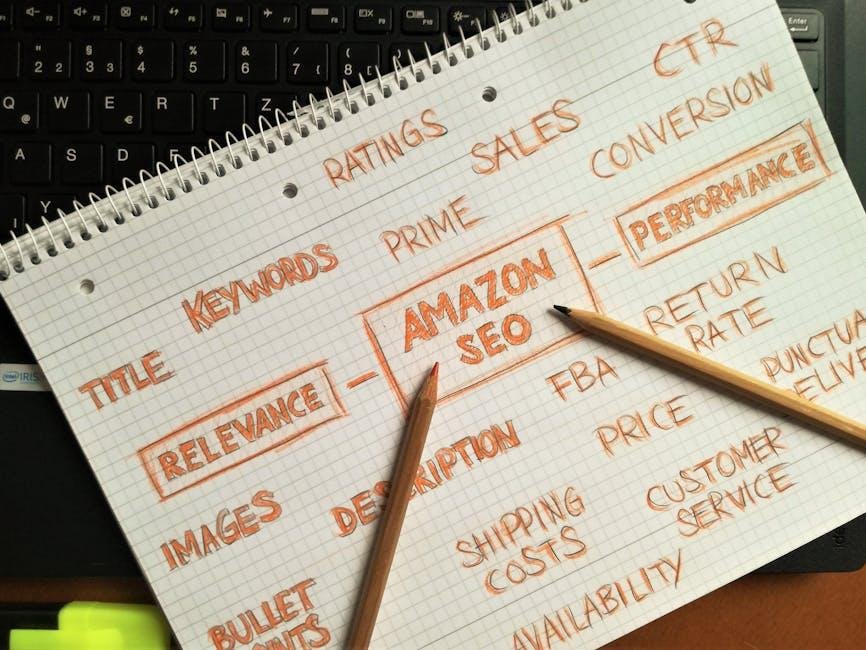in teh ever-evolving landscape of digital marketing, understanding how your business measures up can be the key to unlocking growth. Conversion rates—the percentage of visitors who take a desired action—serve as a vital indicator of success across industries, yet these benchmarks can vary widely depending on the sector. Whether you’re navigating the competitive waters of e-commerce, striving to engage potential clients in professional services, or fostering community engagement in non-profit organizations, knowing the average conversion rates in your industry can provide invaluable insights. In this article, we’ll explore the latest conversion rate benchmarks, unpacking the nuances that differentiate each sector adn offering strategies to help you optimize your performance. Join us as we delve into the numbers that matter most,arming you wiht the knowlege needed to transform clicks into meaningful conversions.
Understanding Conversion Rates Across Diverse Industries
In the ever-evolving landscape of digital marketing, understanding conversion rates is critical for businesses aiming to optimize their performance. Each industry exhibits unique consumer behaviors, which contribute to varied benchmarks in conversion rates. For example, while e-commerce platforms typically enjoy higher conversions due to streamlined transaction processes, industries like non-profits may encounter lower rates owing to the nature of their objectives.Understanding these nuances can definitely help businesses tailor their strategies effectively,ensuring that they not only attract visitors but also convert them into loyal customers.
Analyzing conversion rates across sectors highlights the importance of context in measuring success. Here are a few key points to consider:
- E-commerce: Generally sees conversion rates between 2-5%, driven by effective product presentation and customer reviews.
- Travel and Hospitality: Frequently enough ranges from 1-3%, influenced by customer trust and detailed itineraries.
- finance: Typically experiences rates of 5-10%, where user education plays a crucial role.
| Industry | average Conversion Rate |
|---|---|
| E-commerce | 2-5% |
| Travel & Hospitality | 1-3% |
| Finance | 5-10% |
| Real Estate | 1-2% |
| Non-Profit | 0.5-1% |

Key factors Influencing Conversion Rates and Their Variations
Understanding the dynamics behind conversion rates is essential for businesses aiming to optimize their online performance. Several key factors contribute to the effectiveness of a website in converting visitors into customers. These include user experience, which encompasses site speed, ease of navigation, and mobile responsiveness; content quality, focusing on clarity, persuasiveness, and relevance; and trust signals, such as customer testimonials, security badges, and clear return policies.Additionally, the target audience plays a crucial role, as aligning messaging and offers with consumer needs and preferences can substantially enhance engagement.
Variations in conversion rates can frequently enough be attributed to industry-specific factors. For instance, businesses in the e-commerce sector might see different benchmarks compared to those in B2B services due to the nature of customer decision-making processes. Influential elements include pricing strategies, which tend to vary by market, the length of the sales cycle, and the impact of seasonality on consumer behavior. Below is a simplified view of conversion rate benchmarks across various industries:
| Industry | Average Conversion Rate |
|---|---|
| E-commerce | 2.5% – 3.0% |
| B2B Services | 2.0% – 5.0% |
| Travel & Hospitality | 3.5% – 4.5% |
| Healthcare | 4.0% – 6.0% |

Benchmarking Your Performance Against Industry Standards
Understanding where your conversion rates stand relative to your industry benchmarks is crucial for identifying growth opportunities. Companies frequently enough find themselves surprised by the discrepancies in performance metrics across various sectors. As a notable example, the e-commerce industry typically sees conversion rates ranging from 1% to 4%, while the travel and hospitality segment might achieve rates around 2% to 5%. These differences underline the influence of consumer behavior and market conditions on purchasing decisions.
To effectively assess your performance, consider analyzing key metrics tailored to your niche. Here’s a breakdown of conversion rate benchmarks by sector:
| Industry | Typical Conversion Rate |
|---|---|
| eCommerce | 1% – 4% |
| Travel & Hospitality | 2% – 5% |
| B2B Services | 3% – 10% |
| Finance & Insurance | 5% – 12% |
In addition, diving deeper into qualitative data can reveal insights that raw numbers cannot. Factors such as website design, user experience, and targeted marketing strategies play significant roles in achieving or surpassing industry standards. Establishing a routine for benchmarking against competitors is essential for maintaining a competitive edge in today’s fast-paced market.

Effective Strategies to Enhance Conversion Rates Tailored to Your sector
To boost conversion rates, it is indeed pivotal to tailor your strategies to align with the unique dynamics of your sector. One effective approach is to invest in personalized marketing techniques that appeal directly to your audience’s preferences. This could include utilizing data analytics to segment your customer base and create targeted email campaigns that speak to their specific needs. Additionally, implementing A/B testing on landing pages allows you to experiment with various designs and messaging to find what resonates best with your audience.Such data-driven decisions can significantly enhance your conversion rates.
Another crucial strategy involves improving the user experience (UX) on your website. In sectors like e-commerce, ensuring a smooth and intuitive shopping journey can be the difference between a user dropping off and completing a purchase. Consider the following approaches to elevate UX:
- Optimize page load speeds to reduce bounce rates.
- Create clear and compelling calls-to-action (CTAs).
- Utilize trust signals such as customer reviews and secure payment icons.
- Make navigation straightforward and intuitive.
By focusing on these tailored strategies, you can effectively enhance conversion rates and ultimately drive more value from your efforts.
In Summary
As we wrap up our exploration of conversion rate benchmarks by industry, it becomes clear that understanding these metrics is not just about numbers—it’s about storytelling. Each industry has its own narrative, shaped by consumer behavior, market trends, and unique challenges.By analyzing these benchmarks, businesses can glean insights and tailor their strategies to better connect with their audiences.
Remember, these figures serve as a compass rather than a destination.They provide valuable context, but your journey will be influenced by your unique circumstances, goals, and the inventive solutions you bring to the table. So, whether you’re an e-commerce entrepreneur, a B2B marketer, or a creative agency, take these benchmarks as a guide, but don’t be afraid to carve your own path.
As you embark on optimizing your conversion strategies, keep in mind that the ultimate goal is not just to meet or exceed benchmarks but to foster meaningful relationships with your customers—turning casual interactions into lasting partnerships. Here’s to your success in navigating the dynamic landscape of conversion rates,where every click is a step toward a more engaging and fruitful connection. Happy converting!

